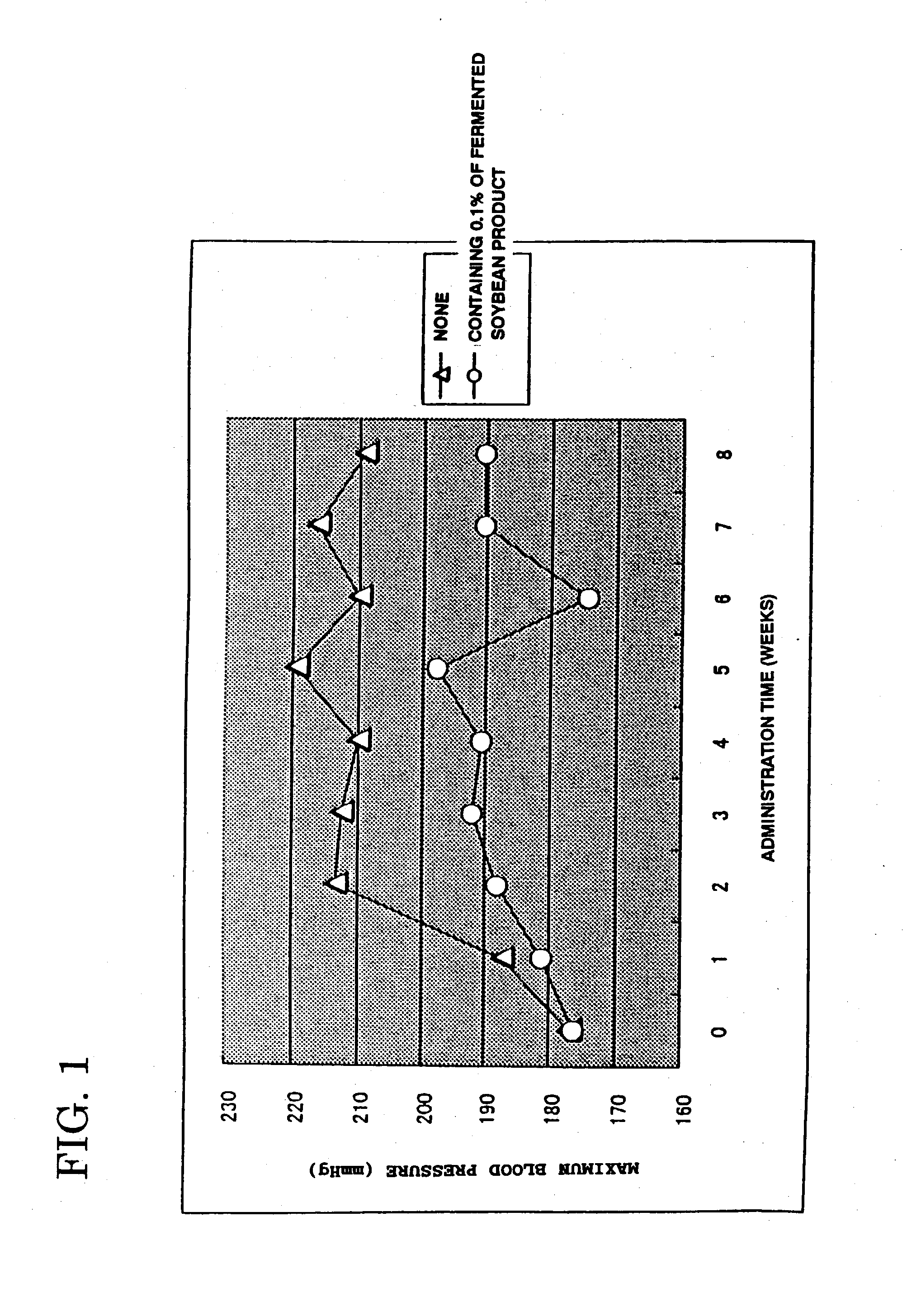Process for producing fermented foods rich in gamma-aminobutyric acid and free amino acids
a technology of gamma-aminobutyric acid and free amino acids, which is applied in the field of process for producing fermented foods rich, can solve the problems of low content of gamma-aminobutyric acid, large amount of germ accounting for only 3%, and large volume of tea, so as to increase the charge volume of fermented food, increase the amount of oxygen consumed, and effectively proceed the reaction
- Summary
- Abstract
- Description
- Claims
- Application Information
AI Technical Summary
Benefits of technology
Problems solved by technology
Method used
Image
Examples
first embodiment
in the following examples correspond to the present invention.
example 1
[0103] Boiled soybean was prepared by boiling 100 g of dehulled soybeans at 120.degree. C. for 5 minutes after soaking in 300 ml of 0.2% acetic acid solution. Then, a suspension of the spore of Rhizopus oligosporus IF08631 was added to and mixed with the boiled soybean in a proportion of 1% by weight. After filling the boiled soybean in a plastic bag with pinhole on the surface so that the thickness becomes about 1.5 cm, the boiled soybean was fermented at 37.degree. C. for 20 hours. After the fermentation, the fermented soybean was freeze-dried and precisely weighed, and .gamma.-aminobutyric acid was extracted with 8% trichloroacetic acid.
[0104] The content of extracted .gamma.-aminobutyric acid was determined with an amino acid autoanalyzer. As shown in Table 1, the fermented product contained a high concentration of .gamma.-aminobutyric acid of 217 mg / 100 g dry weight.
1TABLE 1 CONTENT OF .gamma.-AMNIBUTYRIC ACID IN FERMENTED SOYBEAN PRODUCT CONTENT OF .gamma.-AMINOBUTYRIC IN FERM...
example 2
[0105] The content of .gamma.-aminobutyric acid in the fermented soybean product prepared by using Rhizopus oligosporus IF08631 was compared with those in commercially available fermented soybean food--Natto (commercially available Natto), Miso (commercially available Miso) and Tempe (commercially available Tempe)--and in the boiled soybean. The content of .gamma.-aminobutyric acid in each sample was also measured with an amino acid autoanalyzer according to the method in Example 1. As shown by the results in Table 2, the content of .gamma.-aminobutyric acid in the fermented soybean product prepared using Rhizopus oligosporus IF08631 was the highest among the samples.
2TABLE 2 COMPARISON OF THE CONTENT OF .gamma.-AMINOBUTYRIC ACID IN VARIOUS FERMENTED SOY BEAN FOODS .gamma.-AMINOBUTYRIC ACID (mg / 100 g dry) FERMENTED SOYBEAN PRODUCT 217 COMMRCIALLY AVAILABLE NATTO 30 COMMRCIALLY AVAILABLE MISO 36 COMMRCIALLY AVAILABLE TEMPE 12 BOILED SOYBEAN 26
PUM
 Login to View More
Login to View More Abstract
Description
Claims
Application Information
 Login to View More
Login to View More - R&D
- Intellectual Property
- Life Sciences
- Materials
- Tech Scout
- Unparalleled Data Quality
- Higher Quality Content
- 60% Fewer Hallucinations
Browse by: Latest US Patents, China's latest patents, Technical Efficacy Thesaurus, Application Domain, Technology Topic, Popular Technical Reports.
© 2025 PatSnap. All rights reserved.Legal|Privacy policy|Modern Slavery Act Transparency Statement|Sitemap|About US| Contact US: help@patsnap.com

